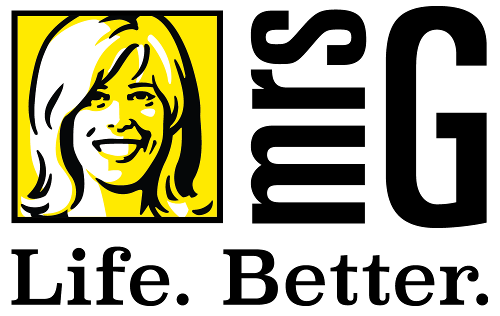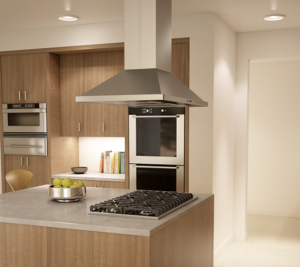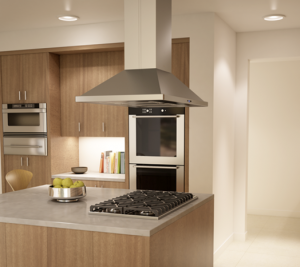A range hood is a fashion statement in kitchen design that expresses the décor values of the homeowner or designer. More than just a pretty face, the range hood performs an important function: it improves the indoor air quality of the kitchen.
It is estimated that the average family of four, produces up to one gallon of grease every year during the process of cooking. A proper kitchen exhaust fan increases indoor air quality by removing leftover cooking contaminants before they mix into you cabinets, walls, drapery, cloths, carpet, etc. The benefits of proper kitchen ventilation is improved indoor air quality, a more comfortable living space and a healthier environment.
Performance
A range hood’s performance is measured in Cubic Feet per Minute (CFM). This is a measure of how much air can be removed from a given space in a single minute. Another way of thinking of CFM is the horsepower of a car. It’s really a measure of performance.
A Sone is an internationally recognized measurement of loudness. This is the level and quality of noise your range hood will emit in a kitchen environment when properly ducted. Examples include:
- Soft whisper : .5 sones
- Normal conversation: 4-5 sone
- Traffic noise: 8 sones
- Refrigerator: 1-2 sones
The power of your cooktop or rangetop is the most important factor in determining your CFM needs. British Thermal Unit (BTU) is the performance measurement of all range tops and cook tops. Determine the total number of BTUs produced by your range top or cooktop and add 100CFM for every 10,000BTU. If you have a 60,000BTU cook top or rangetop you will need at least 600CFM. This formula is a max estimate and assumes that all burners are being used on high at the same time.
Blowers and Ducting
Many rangehoods come with internal blowers already built into the unit. Others come with optional blowers at an additional cost:
- Internal: Installed directly inside the range hood.
- Inline: This blower is installed away from the kitchen environment within the line of the ductwork. It can be placed in an attic or closet or crawl space.
- External: Installed on an outside wall or on the roof.
Ducting is the most important component of ventilation. Keep duct runs as short and strait as possible and always use rigid metal ducts. Use as few elbows and transitions as possible as these decrease the efficiency of the range hood.
When using a range hood that is not ducted to the outside environment, selected range hoods come equipped to take a re-circulating kit that allows air to be cleaned through a carbon filter and reintroduced into the kitchen environment.
Capture Area
Another important feature when choosing the proper kitchen hood is capture area. This is the range hood’s required footprint to properly capture and extract airborne pollutants. The width of the hood should be no less than the width of the cooking surface. Best practices for the width of an island hood is 6″ wider than the cooking surface for proper capture of grease and smoke.
The mounting height of the hood plays a critical role in the performance of the hood. We recommend setting the hood at 24”-32” above the cooktop. Many manufacturers set the maximum height in their installation manual.
Ventilation
Efficient ventilation of fumes from the kitchen also depends on the correct use of the products. Mrs. G’s recommends that you turn the rangehood onto the lowest speed setting at least 5 minutes before you start cooking. This will create an updraft that will guide the fumes directly into the stream of air the hood has created. When finished, leave the hood on for 5- 10 minutes or on Delay Off to ensure all contaminants have been exhausted from the kitchen.
……………………….
Mrs. G TV & Appliances has one of the largest display of kitchen rangehoods from Zephyr, Best, Broan, Vent-A-Hood, and more. Our knowledgeable sales associates will help you sellect not only the most fashionable range hood but one that will improve the indoor air quality of your kitchen, make you living space more confortable and maintaining a healthier environment.
Thank you to Jeff Hessler from Zephyr for the great tutorial offered to NKBA, AIA and ASID members during Mrs. G’s monthly Lunch & Learns.
.



No responses yet